The Crash at Crush: An Organized Train Wreck, Sept.1896
Introduction
Text-to-speech Audio
Images
Staged photo taken before the crash (notice the advertisements on the side of the cars)
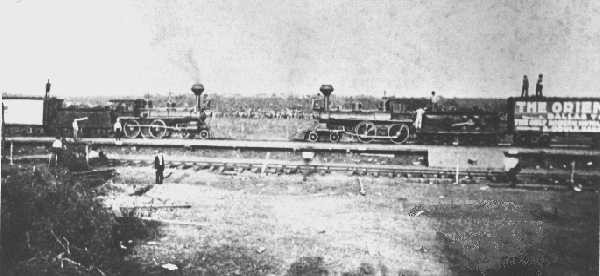
This photo was taken at moment of impact
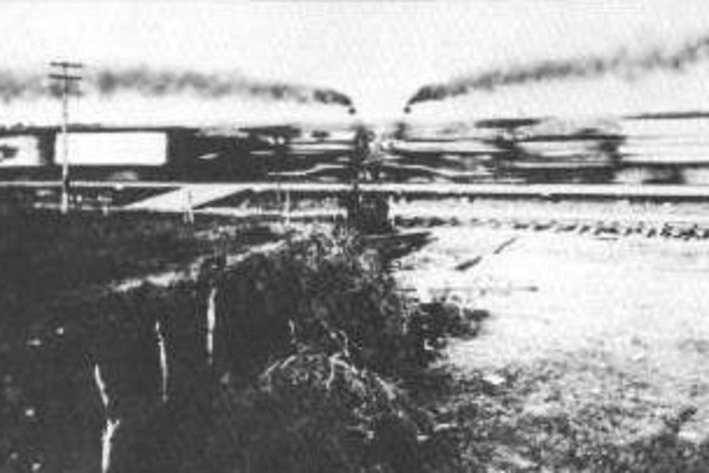
The explosion as the trains collided
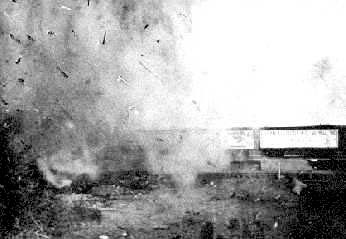
Despite the death of two observers, spectators rush to the scene of the crash hoping to acquire pieces of the wreckage as souvenirs.

This Historical Marker was originally located at the scene of the crash but was moved to the railroad depot so that more people might see it.
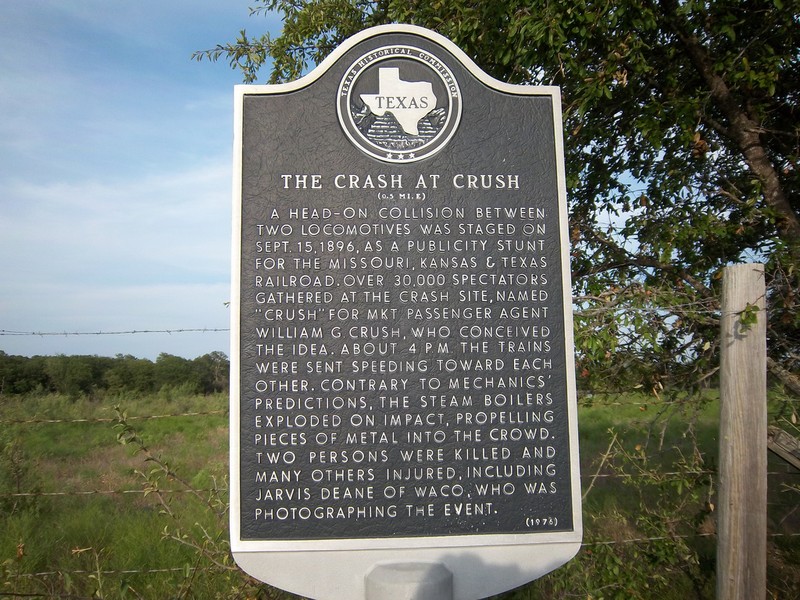
This special GIF file combines each of the historic photos.
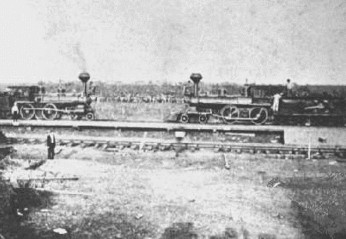
Learn more about the Katy Railroad with V.V. Masterson's book, The Katy Railroad and the Last Frontier from the University of Missouri Press.
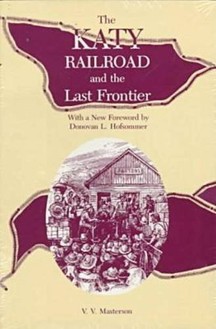
Want to learn more about the history of Texas? Click the link below to learn about T.R. Fehrenbach's popular book, Lone Star: A History Of Texas And The Texans
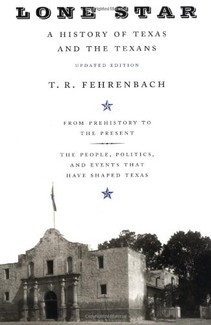
Backstory and Context
Text-to-speech Audio
History Leading Up to the Event
Two significant factors in late 19th-century society led William Crush to conceive the idea of a publicized train wreck. First, daily and syndicated newspapers across the country reported on deadly railroad mishaps, which arguably garnered a nationwide, grotesque fascination with the spectacular disaster.
Second, in the 1890s, the M. K. & T. Railroad was figuring out what to do with its nearly obsolete, 30-ton steam locomotives. M. K. & T. sold some to lumber yards and gravel pits, but many were destined to the scrap yard. Crush combined these two elements and felt the Katy railroad could capitalize on a publicized train wreck.
Crush chose two locomotives for the event: the Old No. 999 and the Old No. 1001. In the months leading up to the event, amidst newspaper articles and advertisements, the locomotives toured the state. Furthermore, Katy officials decided they would not charge for the event and told food concession contractors to sell at reasonable prices. This was a clever ploy to garner attention and sell train tickets to transport the thousands of visitors to the crash site 15 miles north of Waco.
Starting in September, nearly 500 workers built a special four-mile track as well as grandstands for “honored guests,” public speaker stands, telegraph offices, a reporter stand, and a bandstand. There was even a restaurant within a borrowed Ringling Brothers circus tent, a carnival complete with game booths and medicine shows, and a 2,100-foot-long depot that informed passengers of their arrival in “Crush, Texas.”
September 15th, 1896
On September 15th around 3:00 p.m., around 40,000 people were on the grounds of the crash site, where they picnicked, listened to political speeches, and awaited the “Monster Crash.” Spectators had to stand 200 yards away for a good view of the crash, and only the journalists were allowed to be within 100 yards.
Near 5:00 p.m., the Old No. 999 and Old No. 1001 locomotives with six cars each backed to opposite ends of the four-mile track. William Crush trotted along the center of the track on a white horse and raised his hat in the air.
The trains started moving at Crush’s signal. After pushing the throttle to full speed, the crews leaped from the trains. Each train was moving about 50 mph near the impact point, and upon collision, the boilers in both trains unexpectedly exploded and sent scraps of metal flying like missiles.
Two people died in the collision and several others were severely injured, but after the dust settled, thousands of spectators flocked to the scene to gather souvenirs and to take part in photographs.
William Crush was immediately fired from the M. K. & T. Railroad. He was, however, rehired the following day due to the massive public attention he brought to the Katy railroad. The Katy Railroad Company continued to prosper during the first half of the 20th century.
